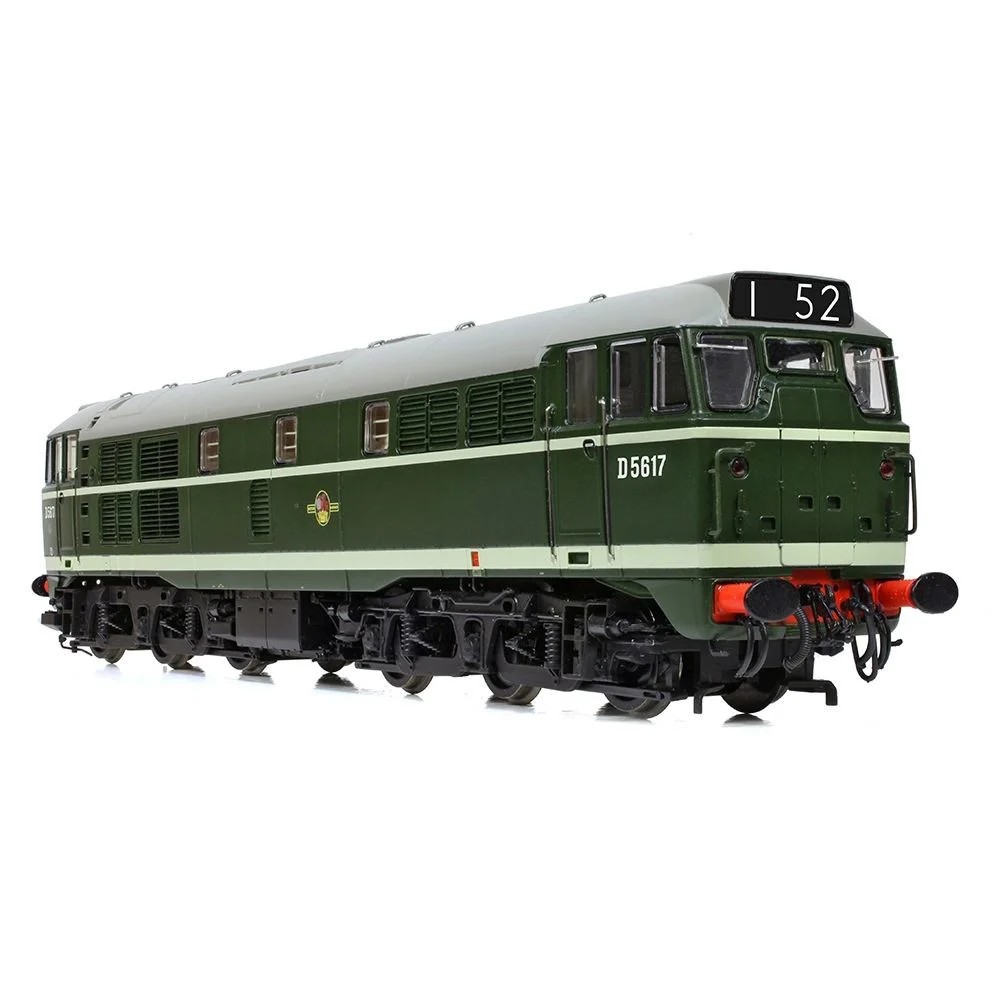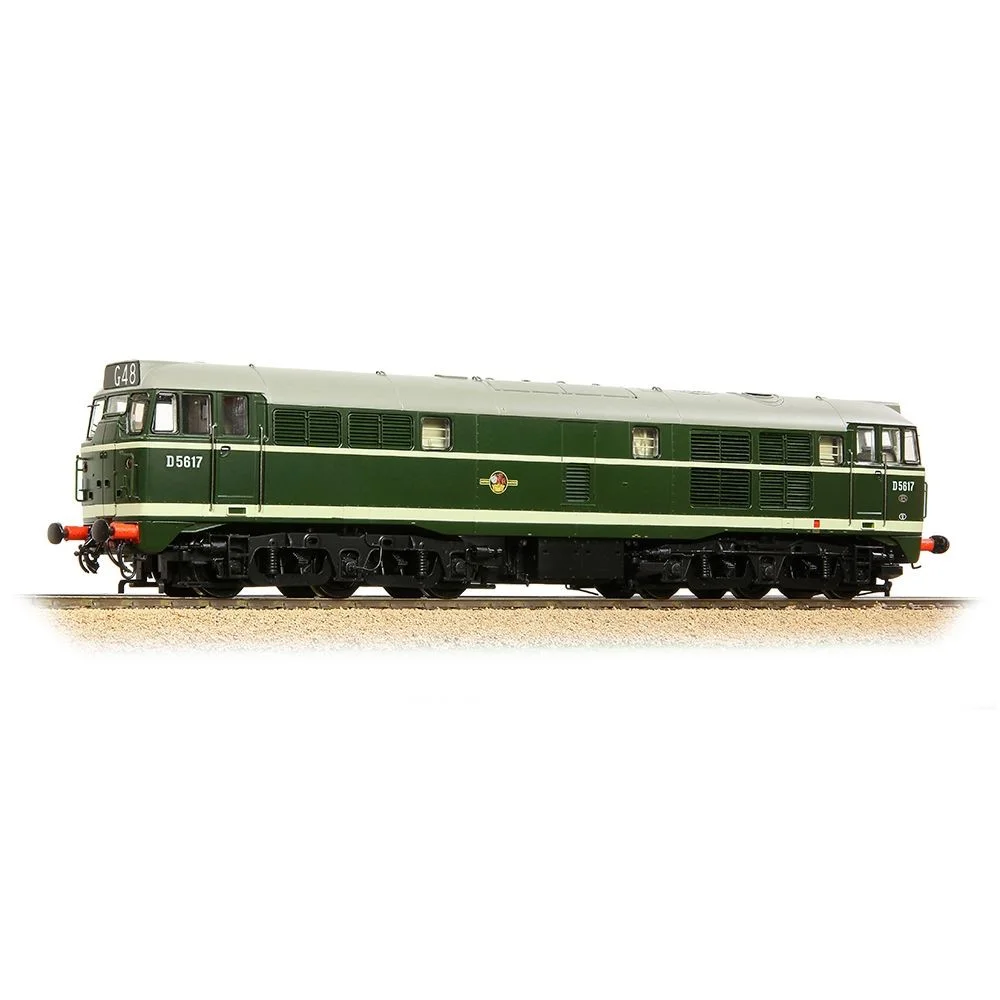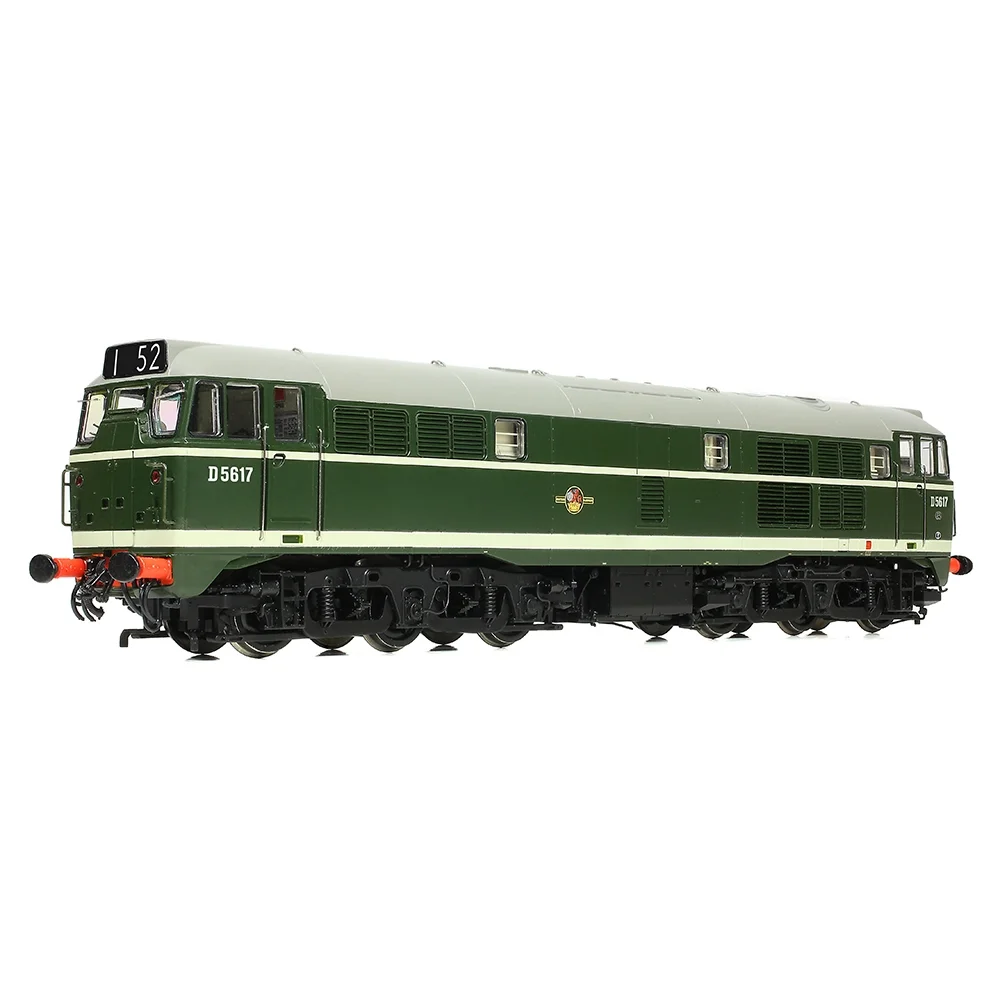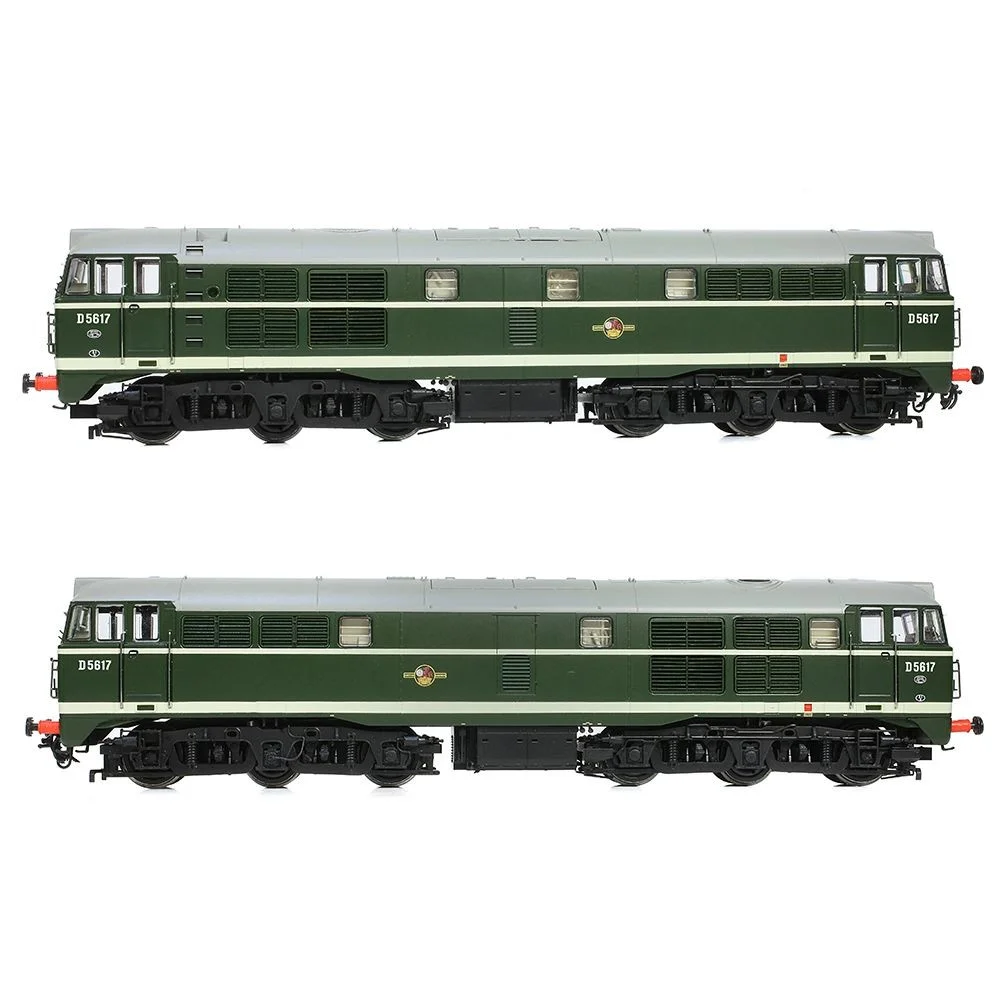Bachmann 35-801ASFX
British Rail Class 31 D5617 British Railways Green with Late Crest
Class & Prototype
- Class: British Rail Class 31
- Traction: Diesel
- Transmission: Electric
- Built: 1957-1962
- Total Built: 263
- Running Number: D5617
The Brush Type 2 represents one of British Railways' most remarkable transformation stories. Built by Brush Traction between 1957-1962, these 263 A1A-A1A diesel-electric locomotives initially struggled with unreliable Mirrlees engines, earning TOPS classification as Class 30. The comprehensive re-engining programme of 1964-1969 replaced the problematic powerplants with proven English Electric 12SVT engines, transforming them into dependable Class 31 locomotives that served for over 50 years. Originally nicknamed "Toffee Apples" (pilot batch) and "Skinheads" (early production), they evolved from operational liability to versatile workhorse, handling everything from branch line passenger services to main line freight duties. The class demonstrates how systematic engineering solutions can rescue unsuccessful designs, with the final locomotive withdrawn in 2017 after six decades of service. Today, 36 examples survive in preservation, whilst excellent ready-to-run models from Accurascale, Hornby, and Bachmann enable authentic recreation of both Class 30 and Class 31 configurations across multiple scales and eras.
Operator & Livery
- Operator: British Railways
- Livery: Green with Late Crest
- Era: 5 - British Railways Late Crest
British Railways transformed Britain's fragmented rail network into a unified national system following nationalisation on 1st January 1948. Created from the "Big Four" companies under the Transport Act 1947, BR operated most of Great Britain's railways until rebranding as British Rail in 1965, managing over 20,000 route miles and inheriting nearly 20,000 locomotives of diverse designs.
The organisation pioneered standardisation through its revolutionary BR Standard locomotive programme (1951-1960), producing 999 advanced steam engines under Robert Riddles' direction. These included the versatile Britannia Pacifics, mighty 9F freight engines, and mixed-traffic classes that incorporated the best features from all predecessor companies. The 1955 Modernisation Plan accelerated diesel and electric traction development, creating fascinating mixed-traction operations.
Notable achievements included establishing unified locomotive classification systems, introducing distinctive corporate liveries, and managing the complex transition from steam to modern traction. BR's six regional structure preserved operational diversity whilst enabling standardisation of practices, signalling, and rolling stock that had eluded private enterprise for over a century.
The BR era represents steam traction's final flowering alongside emerging diesel technology, creating unparalleled locomotive variety. Today, this heritage remains highly popular with railway enthusiasts through extensive preserved fleets, heritage railway operations, and comprehensive model ranges from manufacturers like Hornby, Bachmann, and Dapol, making BR subjects essential for authentic post-war British railway modelling across all scales.



